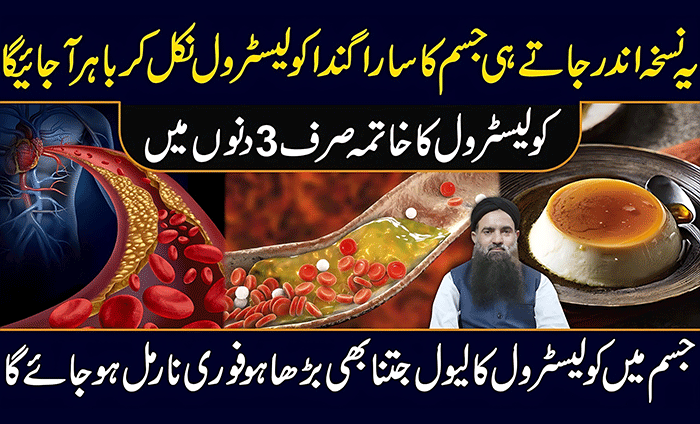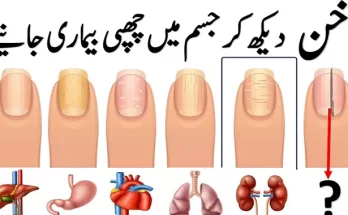
When we talk about health, cholesterol often gets a lot of attention because it’s linked to heart disease and stroke. However, its impact extends beyond the cardiovascular system, affecting various parts of the body, including the lower limbs.
While most people are aware of the typical symptoms of high cholesterol, such as chest pain or shortness of breath, fewer may recognize the subtler signs manifesting in their legs and feet. Here, we delve into five lower limb signs that could indicate your cholesterol levels are elevated, shedding light on the intricate relationship between cholesterol and lower limb health.
5 Lower Limb Signs That Show Your Cholesterol May Be High
Leg Pain and Cramping:
Elevated cholesterol levels can lead to a condition called peripheral artery disease (PAD), characterized by narrowed arteries in the legs due to cholesterol plaque buildup. As a result, blood flow to the legs is restricted, leading to pain, cramping, or weakness, particularly during physical activity.
These symptoms, known as claudication, often manifest in the calves, thighs, or buttocks and tend to improve with rest. However, if left unmanaged, PAD can progress, increasing the risk of complications such as leg ulcers or even gangrene.
Numbness or Tingling Sensations:
Another consequence of impaired blood flow caused by high cholesterol is peripheral neuropathy, a condition marked by nerve damage in the extremities. When blood vessels supplying the nerves in the legs become narrowed or blocked by cholesterol deposits, it can result in sensations of numbness, tingling, or weakness in the feet and toes.
These symptoms may worsen over time, impacting mobility and increasing the risk of falls or injuries. Proper cholesterol management is crucial to prevent further nerve damage and alleviate discomfort.
Non-healing Wounds or Sores:
Reduced blood flow to the lower limbs not only affects sensation but also hampers the body’s ability to heal wounds and sores. Individuals with elevated cholesterol may notice that cuts, bruises, or ulcers on their feet or legs take longer to heal than usual.
This delayed healing process is attributed to compromised circulation, which deprives tissues of oxygen and essential nutrients necessary for proper wound repair. Moreover, poor cholesterol control heightens the risk of developing chronic wounds, posing challenges in their management and increasing susceptibility to infections.
Hair Loss on the Lower Legs:
Surprisingly, changes in hair growth patterns on the lower legs can serve as a subtle indicator of underlying cholesterol issues. In individuals with high cholesterol levels, reduced blood flow to the legs can disrupt the hair follicles’ normal function, leading to sparse or absent hair growth.
This phenomenon, known as peripheral arterial occlusive disease, reflects the systemic impact of cholesterol on vascular health. While hair loss alone may not warrant immediate concern, it serves as a visual cue prompting further evaluation of one’s cholesterol status and overall cardiovascular health.
Cold Feet or Toes:
Poor circulation resulting from cholesterol-induced arterial narrowing can also manifest as persistent coldness in the feet or toes, even in warm environments. This sensation of cold extremities, known as acrocyanosis, occurs due to reduced blood supply reaching the skin’s surface, impairing its ability to maintain optimal temperature.
Additionally, individuals may experience discoloration of the skin, turning it pale or bluish in hue, particularly in response to cold exposure or emotional stress. Addressing underlying cholesterol imbalances is essential to improve blood flow and alleviate discomfort associated with cold feet.
FAQs
Q1: Can high cholesterol make your legs swell?
A1: Yes, high cholesterol can cause swelling in your legs, but it’s not directly because of the cholesterol itself. Instead, it happens because conditions linked to high cholesterol, like peripheral artery disease (PAD) or heart failure, can restrict blood flow, leading to fluid buildup and swelling in your legs. Taking care of your cholesterol levels and treating underlying issues can help reduce swelling and keep your legs healthy.
Q2: Do cholesterol-lowering pills make leg problems worse?
A2: While cholesterol-lowering pills, like statins, are usually safe and helpful for your heart, some people may experience muscle issues as a side effect. These can include muscle pain or weakness, which might affect your legs. But serious muscle problems from statins are rare. If you have ongoing or concerning symptoms, it’s best to talk to your doctor about adjusting your medication.
Q3: Is there a special diet to help leg circulation if you have high cholesterol?
A3: There isn’t a specific diet just for improving leg circulation if you have high cholesterol, but eating heart-healthy foods can indirectly help. Foods like fruits, veggies, whole grains, lean meats, and healthy fats can manage cholesterol and lower inflammation, which can benefit your blood vessels, including those in your legs. Regular exercise and keeping a healthy weight can also improve circulation.
Q4: Can chiropractors help with leg problems from high cholesterol?
A4: Chiropractors mainly deal with muscle and bone issues, but some people with high cholesterol might seek their help for leg pain. Chiropractic adjustments aim to fix spine alignment and nerve function, which could ease leg discomfort indirectly by fixing underlying muscle or nerve issues. But it’s essential to remember that chiropractic care isn’t a substitute for treating high cholesterol properly. Always work with your doctor to manage your cholesterol and any related problems.
Q5: Are there natural treatments or supplements that can help leg circulation if you have high cholesterol?
A5: While some alternative therapies or supplements claim to improve leg circulation, it’s essential to be cautious and talk to your doctor before trying them. Options like acupuncture, herbal supplements, or certain vitamins might have benefits, but there isn’t strong evidence that they directly help leg circulation in people with high cholesterol.
In summary, the health of our legs can indicate how well our heart and blood vessels are functioning. Cholesterol is crucial for keeping our blood vessels working properly. Identifying any small changes in our legs and feet can help us catch high cholesterol early and take action to manage it. This can lower the chances of complications and improve our long-term health. By focusing on controlling cholesterol through lifestyle changes, taking prescribed medications, and getting regular check-ups, we can protect both our heart health and the strength and function of our legs.






